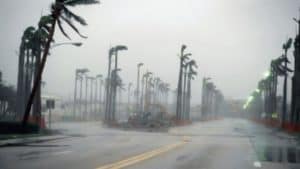What Flood Insurance Does and Does Not Cover

Beyond the human tragedy, the widespread flood damage caused by the storm serves as an important reminder to homeowners in the region—and around the country—about what is covered by insurance and what you need to know about protecting yourself.
As most property owners know, homeowners insurance doesn’t cover flood damage. And in Harris County, where Houston is located, only 17 percent have flood insurance, according to a study by the Washington Post.
Even then, the policies provided by the National Flood Insurance Program don’t cover everything in your home.
Here’s a rundown of what is—and isn’t—covered, according to the Federal Emergency Management Agency, which administers the National Flood Insurance Program.
What’s Covered
Essential systems in the home. This includes electrical and plumbing systems, furnaces, water heaters, central air conditioners, heat pumps, and sump pumps. It also includes cisterns and the water in them, fuel tanks and the fuel in them, solar energy equipment, water tanks and pumps.
Appliances. Refrigerators, ranges, and built-in appliances like dishwashers, washing machines, and dryers are all usually covered. So too are portable window air conditioners and freezers and the food in them. Food inside refrigerators, however, is not covered.
Carpeting and window treatments. If you have permanently installed carpeting over an unfinished floor, or any other kinds of carpets over wooden floors, your policy should cover them. Your policy should also include window blinds and curtains.
Permanently installed paneling, wallboard, bookcases, and cabinets. If you have to replace your cabinets, your policy will pay only for the ones that were damaged. That means that if some cabinets were ruined but others were not affected you might have trouble getting cabinets that match the older ones.
Foundation walls, anchorage systems, and staircases attached to the building. There is an exclusion for “loss caused directly by earth movement even if the earth movement is caused by flood.”
A detached garage, used for limited storage or parking. You can use up to 10 percent of your total building coverage toward your garage, but that amount will be subtracted from the total amount of building coverage available to you.
Personal property. This includes clothing, furniture, and electronic equipment—though only if they’re not stored in the basement.
Certain valuables. Your policy is likely to cover items such as original artwork and furs, up to $2,500 in value.
Other coverage. Some events are covered even if they’re not strictly floods, like groundwater seepage and mudslides. These would include a neighbor’s above-ground swimming pool collapsing and water flows into your home, or a water main break that damages your home and at least one other in your neighborhood. However, damage caused by a sewer backup is only covered if it’s a direct result of flooding.
What’s Not Covered
Flood insurance does have eligibility requirements and numerous exclusions. For example, furniture or other personal property located in a basement, crawl space, or “walkout” basement isn’t covered, including bookcases, window treatments, carpet, TVs, audio systems.
Federal flood insurance coverage is also capped at $250,000 per building and $100,000 for contents, though you can purchase policies with lower limits.
There are separate deductibles for your dwelling and contents coverages. Higher coverage limits are available for nonresidential structure and contents policies.
Source: consumerreports.org















 Accessibility
Accessibility